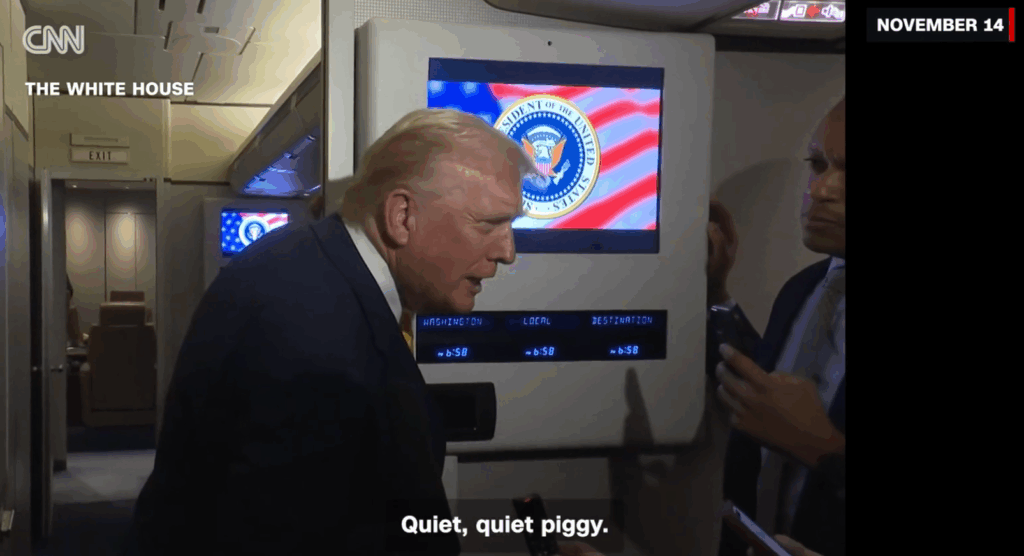Think of it as a fiscal
Financial Services: Making Change
Think of it as a fiscal “Goldilocks and the Three Bears.” Like the fairy-tale heroine, some banking customers are looking for a bank that isn’t too big or too small. In the counties where it operates throughout Indiana and Illinois, MainSource Financial Group wants to be the one that’s just right.
“Our typical consumer is [someone] who still resides in the smaller towns and doesn’t want to have to drive to Indianapolis or the major metropolitan areas to do all their financial services,” says Carrie Stapp, vice president and director of marketing for the Greensburg, IN retail bank, which serves about 70,000 households. “We want them to be able to wrap up their insurance and wealth management needs and brokerage and whatever in one branch. That’s the customer we’re going for.”
Stapp has been with MainSource about six years, and oversees marketing, media placement, new products and services, and all written communications to customers. Prior to joining the bank, she worked for an independent contractor to the U.S. government, helping recruit civilian doctors, nurses and support staff in military hospitals to fill in for medical personnel who had been deployed.
Direct talked with Stapp about how MainSource is using CRM to increase cross-selling opportunities and position itself as a one-stop banking option for its rural customer base.
DIRECT: What is the bank’s target audience?
STAPP: MainSource is primarily located in the smaller, more rural communities. We do have branches in some larger communities, such as the south side of Indianapolis and northern Louisville, Kentucky, but it’s still in the smaller suburbs on the outside of those areas. Basically, the niche we’re going for is maintaining a presence in communities in Indiana and Illinois that the larger banks are moving out of. That’s where we get a lot of our acquisitions, from the larger regional banks that are saying we can’t maintain a $15 million branch in Centerville, IN.
DIRECT: Do you see Bank One as your major competitor?
STAPP: No, not really. Fifth Third Bank, out of Cincinnati, is a major competitor of ours. Then, a lot of our competitors are going to be small, independently owned one-branch banks. We’re in between the Bank Ones, which are so much bigger than we are, and banks like Fifth Third or National City, which we’d consider to be ‘super regional’-sized banks. In this area, people would refer to Fifth Third as being as big as Bank One, because they’re just so prominent.
DIRECT: Demographically, who is your customer?
STAPP: We’re very strong with the elderly generation, but we’re not very strong with Generation X and Generation Y. In a small community, you don’t have the ability to say, ‘We’re going to go after this one market’ like you can in Boston or New York, because that limits you even further. So we’re trying to kind of be all things to all age groups, still maintaining that community banking feel and personal decision-making and all the things the older crowd is used to, but yet also incorporating high technology — Internet banking, bill paying, direct deposit, all those things — for Gen-X and Gen-Y customers who say, ‘I don’t want to go to the bank.’ It’s a mix of all those things we go for. It’s not really an age demographic.
DIRECT: Is cross selling a major goal? Do the majority of your households have multiple products?
STAPP: Cross selling is something we’ve only really focused on [since] the implementation of our CRM program in the last three years. So I would say our cross-selling ratios are not stellar as far as offering multiple services, but they are trending up. We do close to 100,000 pieces of direct mail annually. Sixty to seventy percent of all the advertising we do is direct mail to our existing customer base, promoting multiple products and services. The cross-sell ratio is moving in the right direction. When we started working with Harte-Hanks [three years ago], our cross-sell ratio was horrible — something like 40% of our customers were single serviced. Once we started seeing some of the results, we realized all the opportunities.
DIRECT: How do you judge the success of the return on investment of your CRM and cross-selling initiatives?
STAPP: We don’t actually set goals around cross selling. We do an ROI analysis of 30, 60 and 90 days of every direct mail piece, keeping in mind that two of our divisions — wealth management and insurance — aren’t mapped into our CRM system yet.
DIRECT: Do you see CRM as a way to differentiate yourself from your competitors?
STAPP: Yes. We want to reward customers for banking with us. It’s a fact that it’s more expensive to acquire new customers than retain the customers we have. We’re not [doing] the traditional ‘product-of-the-month’ marketing to bring customers in the door. In looking at our database, we realized what an opportunity we had for organic growth internally. We send quarterly letters to our top customers with gifts to say thank you for banking with MainSource. We want them to feel special about banking here.
DIRECT: What’s an example of a thank-you gift?
STAPP: The Christmas gift was a set of mixed-drink glasses with the MainSource logo. Instead of just sending customers the gift, we sent them a holiday thank-you letter with a coupon attached saying, ‘Come in, we have a gift for you.’ Then the branch manager can give it to them, personally thank them and possibly have the opportunity to sit down and say, ‘What are your goals for 2005?’ [We’re doing] customer relationship management outside of just sending direct mail that says, ‘Buy this, buy this, buy this.’
DIRECT: Are you segmenting your customers at different levels for different offers?
STAPP: Yes. For instance, in 2005 we’re doing a complete single-service mail campaign. It’s a coupon campaign, and probably the most sophisticated segmentation that I have seen us do. It takes all of our single-service customers and segments them by what [products] they currently have [with us]. It will also figure in some demographics such as age. We might take the under-40 age group that has single-service checking accounts with average balances of less than $5,000 and then determine what’s the next most likely product for that group of customers, [like] a mortgage loan, savings account or a money market. It could be 15 different segments. Then we go to the CEO and say, ‘Here are the segments, here are the products, give us special offers to do that.’ We did [a similar] campaign in 2003 and in the first drop we increased total deposits by $2 million and total loans by $1 million. We track it by 30, 60 and 90 days. We’ve gone in and flagged those customers to see if [they received] a mailing, what mailing they got, [and if] they opened up an account.
DIRECT: What’s the typical lifetime value of a customer? Are you finding the CRM program is helping stem churn?
STAPP: We haven’t really been doing it long enough to answer that question accurately. We do try to look at the longevity of products we cross sell. A checking account is something that’s volatile — it may move, it may not move. However, a checking account is also where customers say they do their primary banking. If they have a mortgage loan and a savings account at Fifth Third but they do their checking at MainSource, they’re going to say MainSource is their primary institution, because that’s where they have the most activity. So yes, we look for those things that are tying them to us, such as direct deposit and automatic funds-transfer payments.
DIRECT: How does the Web enter your marketing plans? Are you doing e-mail marketing?
STAPP: No, we’re not. That’s mostly because of technology barriers right now, not because we don’t want to. We do have Internet banking and we can e-mail our customers to say their e-statements are ready, but we have not moved into Internet marketing yet. We’ve actually been looking at it in the last couple of years but we haven’t been able to connect appropriately with our IT department to get all the bugs worked out about how we administer it, but it’s on our agenda.
DIRECT: The bank is currently merging many of its subsidiaries under the MainSource name. Are you using CRM or direct mail to help ease the transition?
STAPP: Yes. For instance, one of the banks just merged in October. We pulled lists by household [to find] all the customers who are savings or checking customers and send them a specialized packet, with all the things they’re going to need to know about the transition to MainSource — the new telephone banking number, the new Web site, if account numbers have changed, who to contact if they have questions. Customers get a series of probably three mailings: first, one announcing the merger; second, an information packet with all the necessary disclosures about how their products are changing; and then third, a follow-up letter about specific items. Everything we do in that regard is through CRM.





